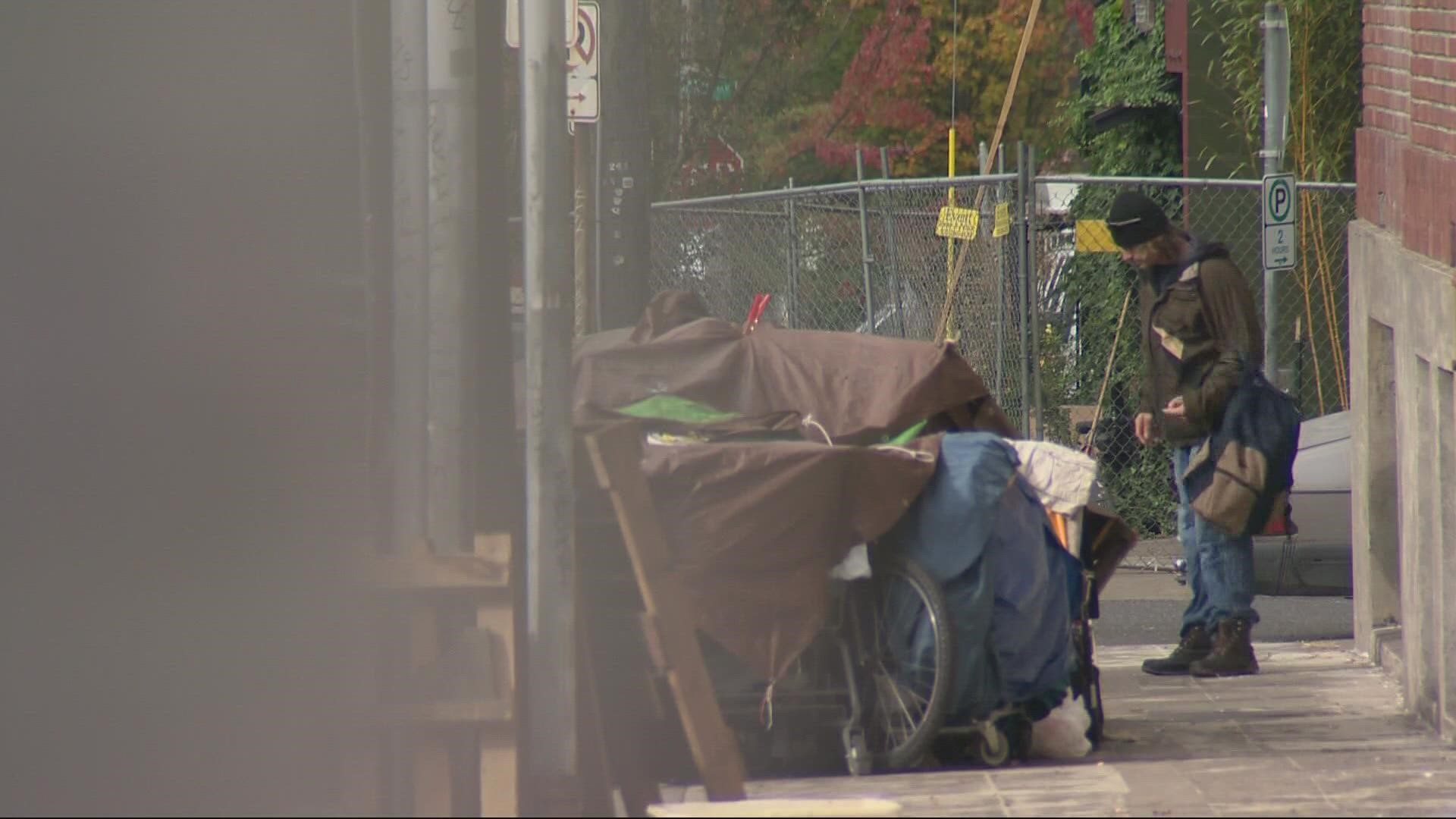PORTLAND, Ore. — The greater Portland area has been working to get people off the streets and into housing. It’s part of the voter-approved Metro Supportive Housing Fund, which was passed in May 2020. It’s a ten-year effort but the results from the first year were just released.
From July 1, 2021 to June 30, 2022, officials reported that more than 1,600 people got off the streets and into housing. Another 9,200 were able to avoid homelessness altogether.
These were people in Multnomah, Washington and Clackamas counties. Those behind this tri-county effort said there’s more work to be done but this early data shows they are moving in the right direction.
“This is a regional housing and homelessness crisis — it’s not unique to any one particular community in the region, it's affecting everybody,” said Patricia Rojas, Metro’s regional housing director.
The Metro Supportive Housing Fund comes from incremental taxes on high-income earners and large businesses. It started in January 2021 and is overseen by Metro. Metro expected to get $180 million in the first fiscal year but they ended up getting more than $200 million. Rojas said they’ve spent about $56 million and the rest will roll over into the coming years.
“We are expecting much more. Something to keep in mind is that this is our first year and so we have a lot more doing and building to look forward to,” Rojas explained.
So far, they’ve housed 1,129 people in Multnomah County, 340 in Washington County and 170 in Clackamas County. More than 9,000 people in Multnomah county received eviction protection, plus 66 in Washington County. They’ve also opened 514 new, year-round shelter beds across the entire region.
RELATED: ‘We’re not giving up’: Judge rejects People for Portland ballot initiative for the second time
However, officials say that Clackamas County didn’t use all the money allocated to them.
“We are paying attention — for example, Clackamas County is underspent, so we are going to be working with Clackamas and the oversight committee to make sure they are on path to spend the allocation that they received,” said Rojas.
KGW asked Rojas, with the fund's $200 million first year, what are taxpayers who contributed to the program actually paying for?
“That is a great question. The funding can go towards any type of service that helps a person on their journey to exit homelessness,” said Rojas. That includes things like case managers, long-term rental assistance, behavioral health services and new shelter beds.
Once someone has been connected with housing, KGW asked Rojas how officials are ensuring that they remain there and don't end up back on the streets.
“Absolutely, that’s a great question. You know folks need varying needs of support after they’re housed,” Rojas said.
To keep people housed, they have what’s called permanent supportive housing. This provides people like Jessica Perry, who’s been homeless for nine years, with financial help and employment so she can keep her apartment.
“That probably is what stops most homeless people from searching out housing or trying to get into a place, because it’s very daunting,” Perry explained.
Money from the Metro Supportive Housing Fund paid for Perry’s first and last month’s rent, along with moving fees. She said it totaled about $5,000.
“I know I couldn’t have gotten to that place without that initial start,” she said.
Now, Perry works full-time at Cultivate Initiatives and pays her own rent each month.
“I wake up every day and I love coming to work. I wake up ready to go and I love it. I love being able to go home and pay my bills and enjoy being inside and all of the awesome little perks that come with it that you don’t realize are important until you don’t have them.”
Metro’s ten-year goal is to house at least 5,000 people experiencing homelessness and to help at least 10,000 who are either newly homeless or at extreme risk of becoming homeless. Their full annual report comes out in October.

